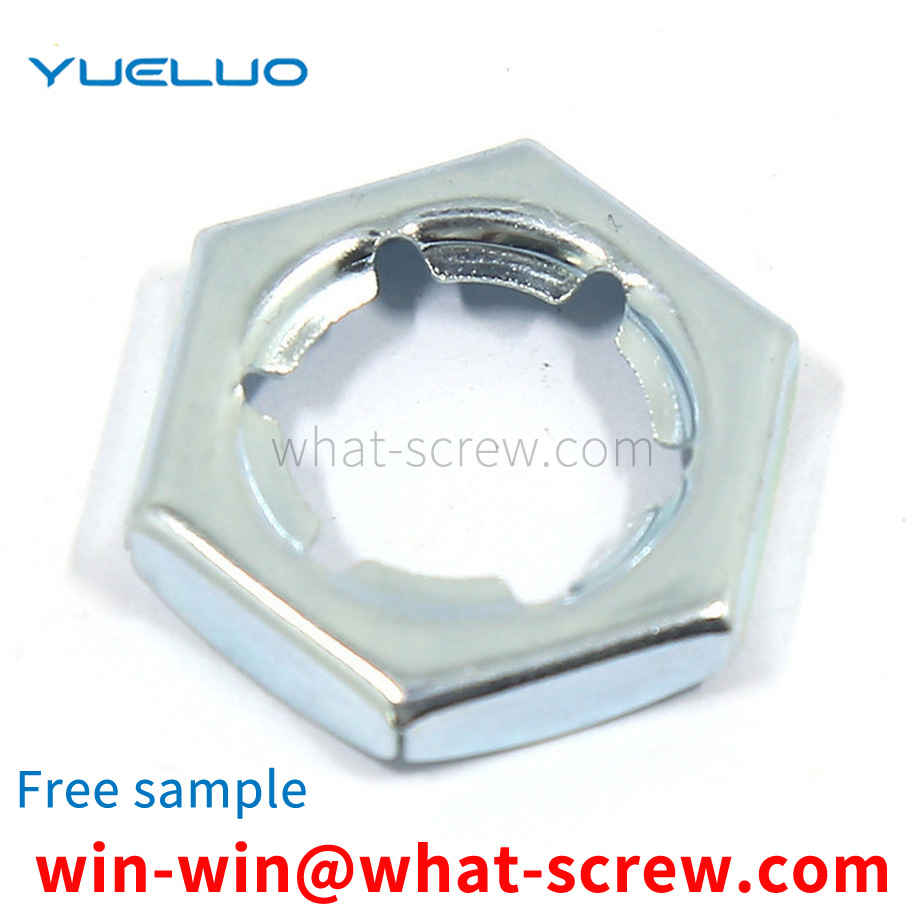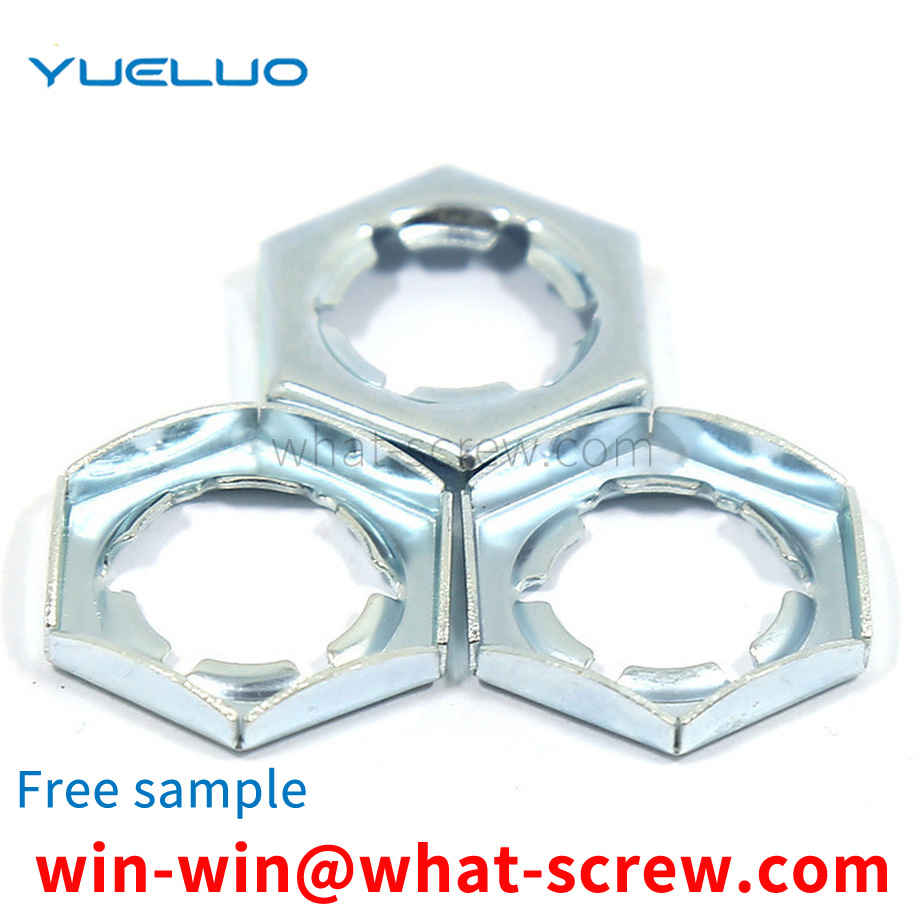total of 13 domestic automotive fastener companies were interviewed and investigated in this survey, and all the companies under investigation have passed the TS16949 system certification. An average car has about 1500 fasteners, and the total bolt assembly time for each car is about 2.5~3.2h. It can be seen that the variety and quality of fasteners have an important impact on the level of the main engine and the quality of the vehicle. This article analyzes the localization of high-strength threaded fasteners and the management of supply quality from the perspective of the production process of high-strength threaded fasteners. Product flow of high-strength threaded fasteners The production process of high-strength threaded fasteners is raw material transformation → cold heading forming → thread processing (thread rolling or thread rolling) → heat treatment → surface treatment → sorting and packaging, generally used above grade 10.9 Thread rolling process after heat treatment. The steel grades commonly used for high-strength bolts of automotive fastener materials are 35 steel, 45 steel, and ML35 steel for grade 8.8 bolts; 35CrMo for grade 10.9 bolts; 40Cr; 35CrMo, 42CrMo, and SCM435 for grade 12.9 bolts. The raw materials for domestic fasteners are basically in the hot-rolled state, while the steel for fasteners produced in Japan and other countries is basically in the state of direct cold heading. Users do not need pretreatment, which can reduce costs from the link. Common failure modes of fastener failure are assembly elongation, fatigue fracture, and delayed fracture. In addition to the material, the quality of cold heading forming and thread processing (thread rolling or thread rolling, tapping) threaded fasteners, forming equipment and thread processing equipment and molds (production process and equipment) are the key factors to ensure their quality. Especially in the state of large-scale and multi-variety supply, automotive fasteners that require high machining accuracy, how to ensure product consistency and defect prevention is one of the problems faced by fastener production. For the cold heading equipment and thread processing equipment of the investigated companies, domestic equipment accounts for about 40%, Taiwan equipment accounts for 50%, and imported (Europe, America, Japan) equipment accounts for about 10%; Partial folding, thread streamline upsetting, tooth wrinkles and cracks, etc. Domestic fastener factories are limited by capital or other reasons, and most of them use domestic equipment and Taiwan equipment to produce fasteners for automobiles. To ensure the dimensional tolerance and geometric tolerance of large-scale production of high-end fastener products, online monitoring should be increased. Means and mold making level. Eliminate unqualified products in production, so as to ensure the assembly quality of OEMs and OEMs. [1] About 80% of the surveyed fastener enterprises have heat treatment equipment, and most of them use Taiwan heat treatment process lines; the process line equipment is a continuous mesh belt furnace with atmosphere protection, and the atmosphere, temperature and process parameters are controlled by a computer. The high-strength fastener industry is a relatively competitive industry. If we want to have a thorough and objective analysis of the technology and market of the high-strength fastener industry, we need to start from the following aspects: domestic high-strength fasteners Industry and Enterprise Competition Pattern High-strength Fastener Industry Industrial Policy High-strength Fastener Product Technical Standards and Regulations my country's High-strength Fastener Product Technology Competition Pattern Dynamics Regarding these six aspects, many domestic research institutions have conducted in-depth research and research, and many institutions have long been engaged in research and research in this industry.
At present, the nut is used as the main body through the riveting connection with the gasket, which is more and more widely used in the industrial field, especially the automobile industry. The gasket connected with the nut has two types: spring gasket and flat gasket. After the nut is tightened, the washer gives the nut an elastic force, which is pressed against the nut to make it not easy to fall off; and the function of the flat washer is to increase the contact area between the nut and the coupling, increase the friction force, reduce the pressure per unit area and protect the surface of the connected parts. Not damaged, stop the nut from loosening. Therefore, gaskets have a wide range of applications in the field of fastening connections, and it is more and more important to improve production efficiency, reduce production costs, and meet growing demands.
Self-tapping screws were introduced into the industry in large numbers in 1914. The earliest design (essentially imitating a wood screw) was a thread-forming screw made of hardened steel with an A-ended end, mainly used to connect sheet metal channels for heating and ventilation systems. Therefore, it is also called: sheet metal screw. By the end of the 1920s, with the widening of the market and new applications, emphasizing new designs, its application performance was widely improved. The following introduces the four different stages of the development of self-tapping screws in 40 years: thread forming self-tapping screws, thread cutting self-tapping screws, thread rolling self-tapping screws and self-drilling self-tapping screws. 1. Ordinary self-tapping screws (thread forming self-tapping screws) Ordinary self-tapping screws are a direct product of early sheet metal screws. The principle is: when screwing it into a prefabricated hole, the internal thread connected to the screw is formed by the displacement of the material around the hole and the material is pushed into the space between the threads. 2. Self-cutting self-tapping screws (thread cutting self-tapping screws) Because ordinary self-tapping screws are formed only in very thin threads. And it can be easily realized on materials with good toughness. Develop and expand the use of self-tapping screws to thicker sections and harder, brittle and other materials with poor deformability. In this way, the self-cutting self-tapping screw is developed: a cutting groove or cutting edge is machined at the end of the screw shank. When this kind of screw is screwed into the prefabricated hole, the screw acts as a tap and actually cuts out the thread that connects with itself. 3. Self-Extrusion Self-Tapping Screws (Thread Rolled Self-Tapping Screws) In the early 1950s, fastener engineers began to recognize the potential advantages of self-tapping screws as structural rather than just lightly loaded attachments. This has led to the development of a new self-tapping screw thread rolling self-tapping screw (self-extrusion self-tapping screw). According to the design principle of cold forging taps, the thread and end are specially designed for this kind of screw, so that the screw can be formed by applying intermittent and periodic pressure on the crest of its thread instead of on the side of the entire thread. Internal thread for connection. By concentrating and limiting the forming pressure, the pressurized material next to the hole is made to flow more easily and to better fill (squeeze) into the flanks and roots of the thread of the self-tapping screw. Since the frictional resistance of screwing in is much lower than that of ordinary self-tapping screws, threaded rolling self-tapping screws (self-extrusion self-tapping screws) can be screwed into thicker sections. At the same time, it has better screw control and tightening torque, and greatly improves the connection strength and overall firmness. The engineering standard of this kind of self-tapping screw stipulates that the selection of materials, the mechanical properties of heat treatment and the working performance should be strictly controlled. 4. Self-drilling and self-tapping screws (self-drilling screws) People have done statistics: Among the ten expenses that constitute the total assembly cost, the highest one includes the processing of holes. In practical applications of self-tapping screws, prefabricated holes need to be processed. Moreover, in order to make the prefabricated holes have good effect in practical application, the size of these holes must be controlled within a fairly strict range. In the early 1960s, self-drilling and self-tapping screws appeared. A major step forward in reducing assembly costs by eliminating the need to machine prefabricated holes. In general, self-drilling and self-tapping screws realize drilling, tapping and tightening in one operation. These are the four main stages of self-tapping screw design and development. In addition, two newly developed products are also worthy of introduction. Both are screws with a special thread type. One is designed for plastic and other low-strength materials; the other is used in the construction industry to connect cement wall panels, so it is also called wall panel self-tapping screws.
The advantages of the pressure riveting nut: 1. The length guarantee of the distance range is realized, which greatly simplifies the assembly process and speeds up the production progress of the assembled spacing panel and accessories; 2. The back of the plate is completely embedded and flat, while ensuring the head of the nut column The plane is smooth with the plate; 3. The raw material is free-cutting iron or free-cutting stainless steel; the technical guide for the application of the pressure riveting standoff: 1. When selecting the standoff, it must be based on the thickness of the plate used, the exact size range, and the hardness of the low-carbon steel plate must be less than 70RB, the hardness of stainless steel plate must be less than 80RB. 2. The surface of free-cutting iron is treated, and the stainless steel maintains its original color. Users can order according to the model and specifications in the table according to their needs, or they can also make special orders according to their needs. 3. The hole size of the plate must be processed according to the tolerance size of 0-+0.075mm, and punching is recommended. 4. The installation must be realized by press riveting operation, and it must not be knocked in by impact. 5. When the material is stainless steel, the tail number should be marked with S. 6. The end face of the nut column is represented by C. 7. The length of the through-hole nut column is full wire below 10mm. If it is above 10mm, it can be reamed on the hexagonal end face (type I) or the round end face (type II).
Fasteners are a type of mechanical parts that are used for fastening connections and are widely used. All kinds of fasteners can be seen on all kinds of machinery, equipment, vehicles, ships, railways, bridges, buildings, structures, tools, instruments, meters and supplies. It is characterized by a wide variety of specifications, different performance uses, and a very high degree of standardization, serialization and generalization. Therefore, some people also refer to a type of fasteners with existing national standards as standard fasteners, or simply as standard parts. Fasteners are the most widely used mechanical foundations. With my country's entry into the WTO in 2001, it has entered the ranks of major international trade countries. my country's fastener products are exported to many countries in the world, and fastener products from all over the world are also pouring into the Chinese market. Fasteners, as one of the products with the largest import and export volume in my country, are in line with international standards, which have important practical significance and practical significance for promoting Chinese fastener enterprises to go to the world and promoting fastener enterprises to fully participate in international cooperation and competition. strategic significance. Due to the specifications, dimensions, tolerances, weights, properties, surface conditions, marking methods, and specific requirements of items such as acceptance inspection, marking and packaging for each specific fastener product.
We have many years of experience in the production and sales of screws, nuts, flat washers, etc. The main products are: metric tooth screws, open aluminum rivets, floating female cage nuts, terminals and other products, we can provide you with suitable fastening products piece solution.



















 Service Hotline
Service Hotline




